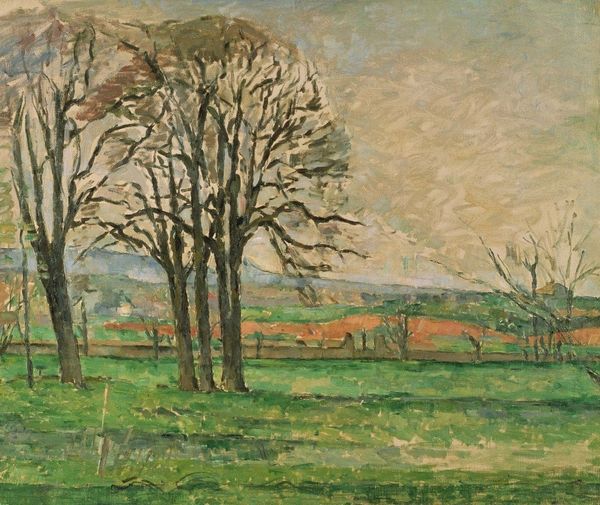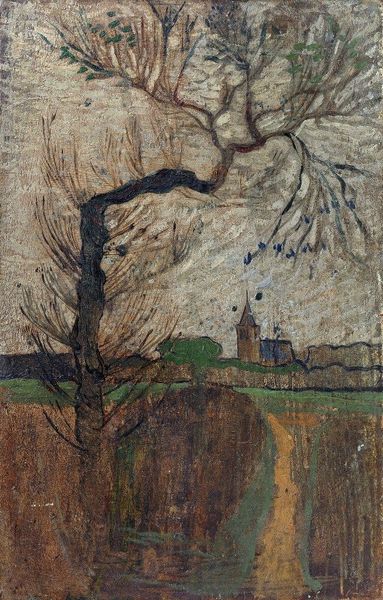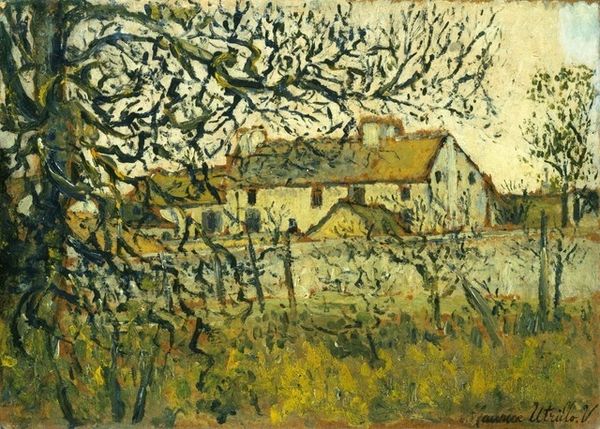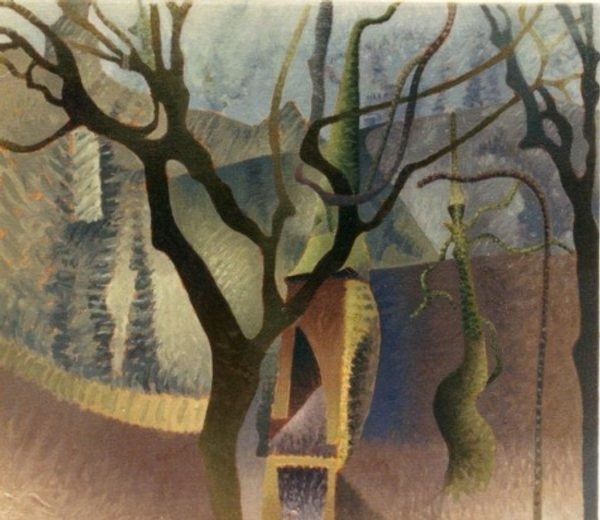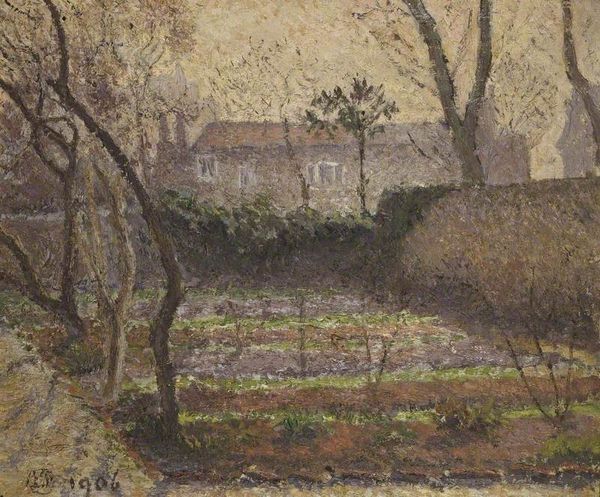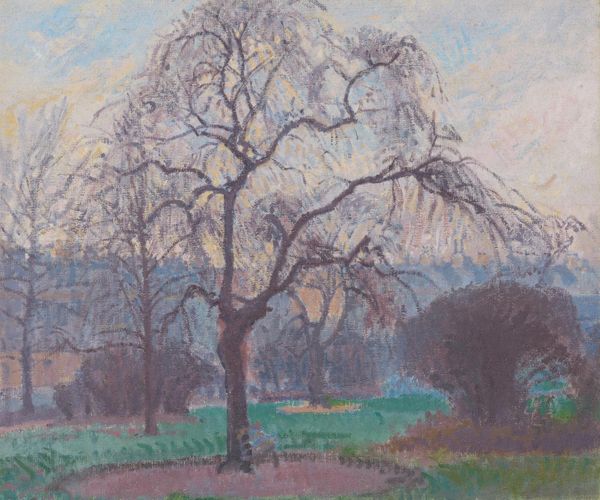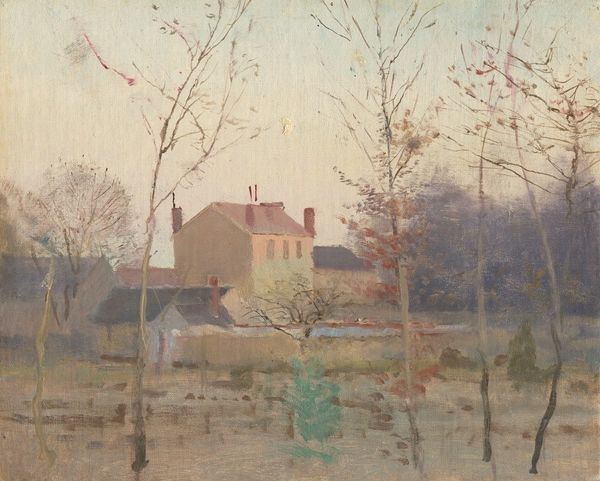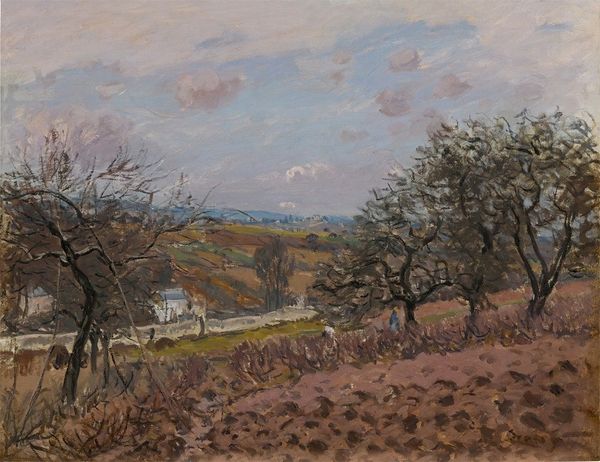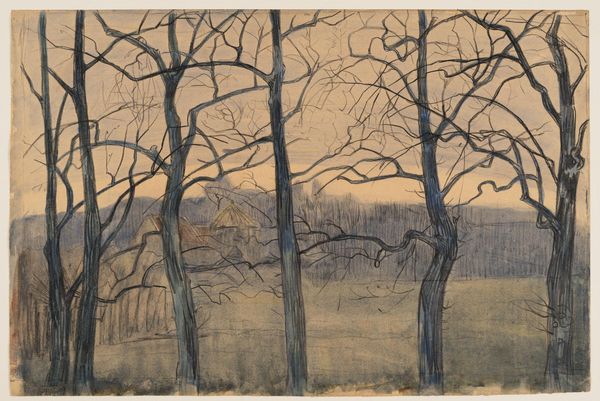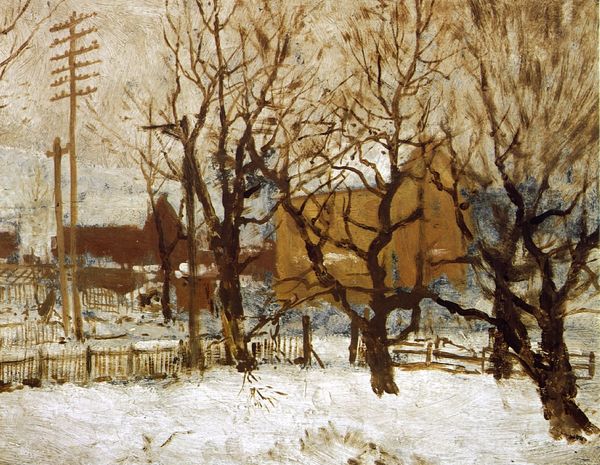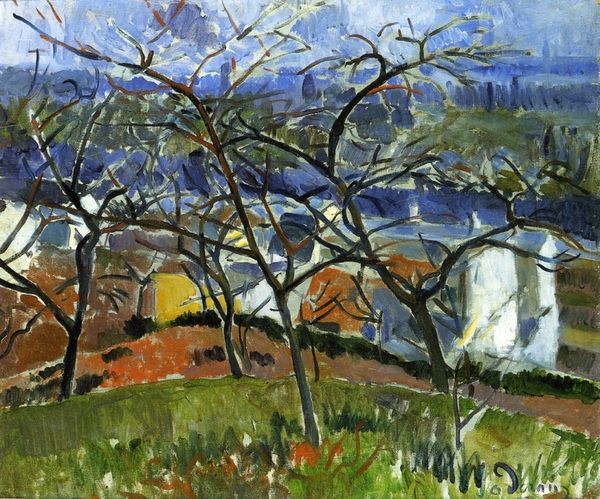
Copyright: Public domain
Editor: Here we have Istvan Nagy’s "Bald Trees with Houses," painted in 1911. It's an oil painting showing...well, exactly that: bare trees against a pale sky, with houses nestled behind them. It strikes me as a somewhat bleak, almost unsettling scene. How would you interpret this work? Curator: It's interesting that you find it bleak. Considering its historical context, that feeling makes sense. Remember that 1911 was a period of immense social and political upheaval in Europe, particularly in regions like Hungary where Nagy was working. This image speaks to the transition from rural agrarian life to industrialised society and all of the anxieties related to that transition. Editor: So the bleakness could reflect the anxieties of the time? How so? Curator: Consider how the stark, skeletal trees dominate the landscape, almost obscuring the houses. This compositional choice emphasizes the fragility of human structures against the overpowering forces of nature. Perhaps Nagy is using this to show anxieties related to rapid modernization or other socio-economic difficulties impacting Hungarian agrarian life in the early 20th century. Do you see a visual opposition here? Editor: I see what you mean! The skeletal forms do seem to overpower the structures. So rather than a purely observational landscape, it’s an engagement with wider societal themes of transition, and that helps clarify the mood significantly. Curator: Precisely. And that understanding is crucial because it links aesthetic choices with lived experience and public concern. The value of landscape paintings extends beyond pretty views and decorative choices; here, Nagy subtly captures a complex dialogue with the transformations his world was experiencing. Editor: I had only thought of the painting in terms of its immediate appearance and tone, but now I see the connection to social change and how art reflects the challenges of a society! Curator: That’s the key. Examining art's public role, especially in mirroring political imagery or social sentiments, reveals its profound significance beyond surface-level interpretations.
Comments
No comments
Be the first to comment and join the conversation on the ultimate creative platform.
